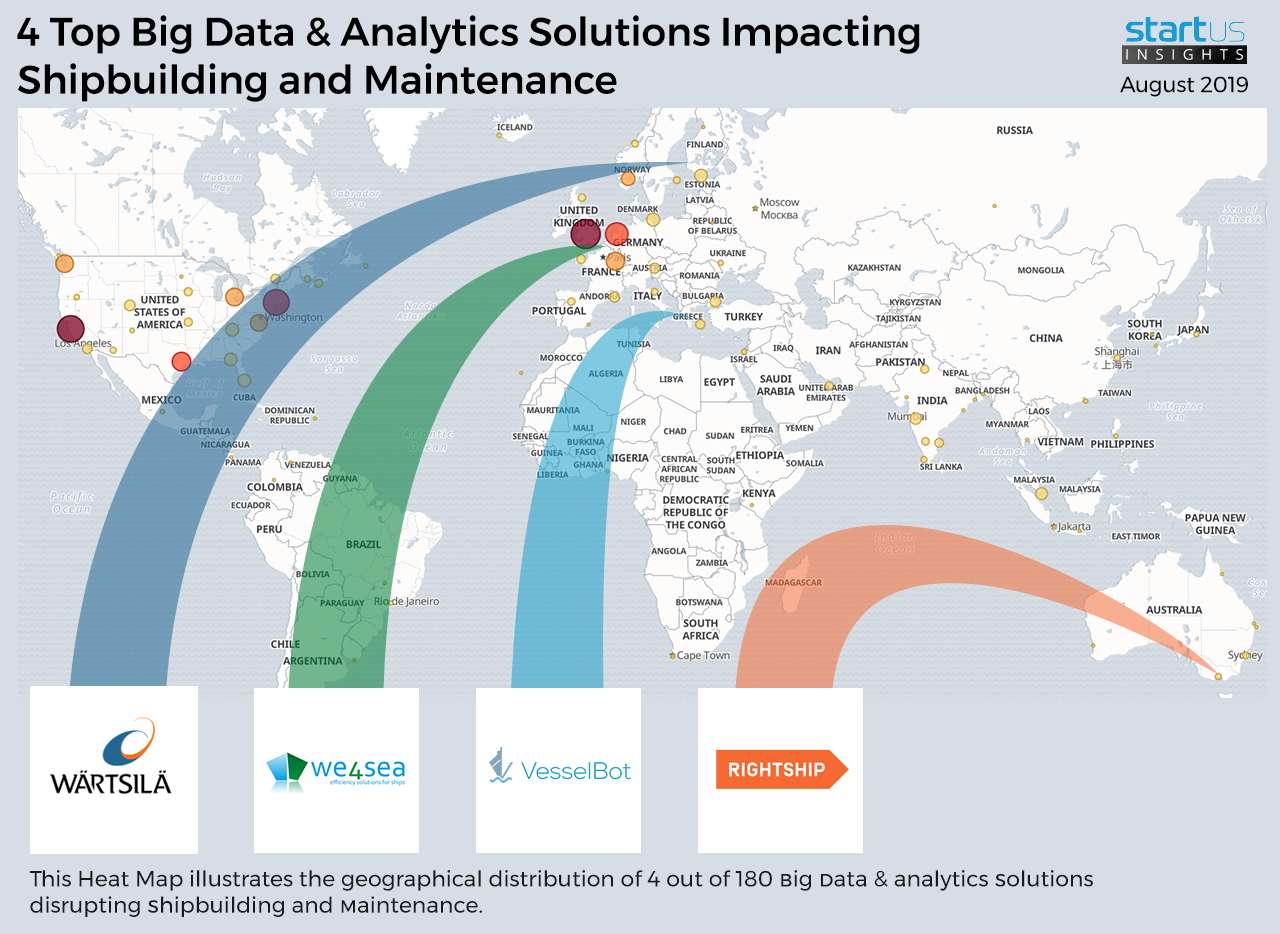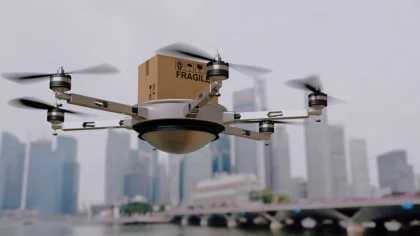Our Innovation Analysts recently looked into emerging technologies and companies working on solutions for the shipbuilding industry. As there is a large number of companies working on a wide variety of solutions, we want to share our insights with you. This time, we are taking a look at 4 promising Big Data and Analytics solutions.
Heat Map: 4 Top Big Data & Analytics Solutions
For our 4 top picks, we used a data-driven scouting approach to identify the most relevant solutions globally. The Global Heat Map below highlights 4 interesting examples out of 180 relevant solutions. Depending on your specific needs, your top picks might look entirely different.
We4Sea – Design Optimization
Being able to predict a vessel’s performance and operational efficiency at the design stage is of substantial value to both the shipbuilders and their operators. With big data analytics, it is possible to simulate and forecast such metrics for a ship that still exists only as a digital model, also known in the industry as the Digital Twin of the vessel.
Dutch company We4Sea BV develops simulation software that uses complex data analytics tools which, based on the expected operational profile of a given vessel or the comparison to similar ship metrics, can simulate and predict the ship’s fuel efficiency and emissions. This allows shipbuilders to make decisions on various design solutions in terms of their potential return on investment (ROI) and their impact on energy savings and operational performance.
Vesselbot – Chartering
Finding the right ship to transport cargo is an essential part of maritime operations as it can lower the costs of operations as well as decrease the time spent in transporting goods. Big data analytics is capable of harnessing vast amounts of data points relevant to the chartering process, such as Automatic Identification System (AIS) information, vessel sizes, departure & arrival times, market rates, and ship routes to provide the most suitable options for both charterers and ship owners. This is powered by machine learning algorithms and Artificial Intelligence (AI).
Greek company VesselBot develops an AI-powered digital vetting marketplace that, based on numerous factors, market data as well as each ship’s history, matches chartering companies with vessel owners. They develop a proprietary ranking system for both vessels and charterers to increase their options allowing them to make informed decisions.
RightShip – Vetting
Hardware modifications are not the only way of reducing the amount of fuel used by ships. Getting the onboard propulsion equipment to work efficiently and adapt to the surrounding environment during trips can save costs too. The software adjusts power usage according to the changing conditions while continuously gathering and analyzing energy usage data.
Australian company RightShip develops a proprietary online vetting platform, RightShip Qi, that is based on IBM’s business analytics software, which uses predictive analytics and reporting to forecast the likelihood for a given vessel to have an accident over the period of one year. The platform gathers information from more than 50 different sources and assigns a risk rating based on the analysis of the already transformed data. The rating incorporates key risk factors including regulatory risk, casualties risk, Port State Control (PSC) indicators, shipbuilder risk, size, age, type, and continuity risk.
Wartsila – Ship Operations
There is a substantial amount of data gathered and generated by various ship units, measurement devices, sensors, and propulsion system components. With proper data analytics tools in place, they provide key insights into the ship’s performance, indicate its flaws and point to potential threats. Big data can help optimize a vessel’s fuel utilization, maintain the right speed during voyages, and indicate when certain ship units require maintenance.
Finnish company Wartsila develops a condition-monitoring platform that takes into account a multitude of factors and measurements from sensors embedded into most critical ship components to predict when a certain unit might require maintenance. The platform analyzes large sets of data along with environmental conditions and fuel consumption information to determine the actual status of vessel parts rather than sticking to a maintenance schedule.
What About The Other 176 Solutions?
While we believe data is key to creating insights it can be easy to be overwhelmed by it. Our ambition is to create a comprehensive overview and provide actionable innovation intelligence for your Proof of Concept (PoC), partnership, or investment targets. The 4 solutions showcased above are promising examples out of 180 we analyzed for this article. To identify the most relevant solutions based on your specific criteria and collaboration strategy, get in touch.









